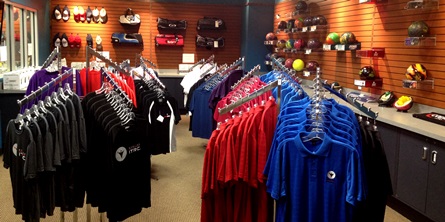Equipment 101
Equipment 101

Whether you’re a novice in the sport or a veteran who already owns bowling equipment, having the right tools and knowing how to use them effectively is essential for high scores. We’re going to cover the basics of what equipment is out there and how these items can make your life easier.
Performance Bowling Ball(s)
Notice the word ‘performance’. House balls (the ones that the bowling center provides on the rack) won’t cut it if you’re serious about the sport. Why? House balls are not made to hook and can even be unreliable as a spare ball due to wear and tear. Performance balls are usually in much better condition and can give you hook into the pins – making it much easier to strike.
With that in mind, the next foreseeable question is, “I already know that performance bowling balls are the better choice, but there are tons of different balls out there. Which one is the best for me?” USBC Director of Coaching, Carolyn Dorin-Ballard explains how different performance balls behave:
Which ball(s) you choose depends on your experience with performance bowling balls. If you’ve never worked with a performance ball before, try purchasing an entry-level ball. These are usually solid-reactive bowling balls that are designed to have modest hook into the pins – making it much easier to control.
For those who need a different ball motion, there are also pearl-reactive performance balls on the market that have more hook potential in the back-end of the lane – but they can be much harder to control. What ball(s) you choose to have in your arsenal is up to you.
Bowling Towel
And while you may have a great performance ball, its surface will need to be protected with a bowling towel. This essential rag takes the brunt of all the oil your ball picks up from being on the lane and helps transform your slick marble back into the performance ball it was meant to be. ”Microfiber” towels that can easily absorb and hold a lot of oil without transferring it back to the ball. And make sure you can also effectively wash the towel when you’re finished with using it. Microfiber towels these days are probably your best bet for a great quality bowling towel.
Bowling Shoes
.jpg?n=5670)
Bowling shoes are another very important piece of equipment to have. In fact, typical bowling center shoes (house shoes) can actually hurt your game. Why? To start, house shoes usually have a lot of wear and tear. This can make the soles extra slippery or sticky and make you work harder to maintain proper form on your approach. Not only that, house shoes are designed for both left and right handed bowlers and have a slide sole on both shoes, this can make it difficult to obtain any traction during your approach.
Getting your own bowling shoes gives you the consistency of a good fit, a much nicer sole that’s made for bowlers and you’ll never have to wonder who wore these shoes before you did.
When looking for the right shoe, know that the quality of the bowling shoe can vary greatly. While many bowling shoes have the quality soles, some higher-end bowling shoes actually have replaceable soles on each shoe to maximize your approach and follow-through. Whatever purchase you make, the goal is to have comfortable pair of bowling shoes that will supplement your game.
Wrist Device (Optional)

If you’re having trouble maintaining your wrist position, a wrist device may help. When you see someone wearing this piece of equipment, you may think of the bionic man – or woman. But using a wrist device is a perfectly acceptable and useful tool for bowlers who know how to use it. Whether you use it in practice or at league, the wrist device is designed to hold your wrist position steady – helping to make sure that nothing is muscled or falls out of place while you throw.
Bowling Tape (Optional)
While you may possess all the bowling equipment in the world, bowling tape is a tiny, useful product that can make all the difference in your performance. If you’ve seen bowling tape on the lanes, you’ve probably noticed two kinds – one is for your fingers and the other for the ball’s thumb hole.
Bowling tape for your fingers is primarily used for places on your skin that may get irritated or even blister when bowling. This is very useful for inexperienced bowlers or for more experienced bowlers who throw a lot of balls in one night.
The other kind of bowling tape is used in the thumb hole of your ball. While your performance ball should be drilled to fit your hand, other conditions such as humidity, temperature and general use can swell or shrink your thumb – altering the fit. This tape is there to help you gain a secure grip on your ball when you need it. And when you don’t, it’s simply a matter of removing the tape.
Remember – equipment isn’t everything but it can help you significantly improve your game. Make sure to make educated decisions about what you purchase and how it will affect your performance moving forward.





